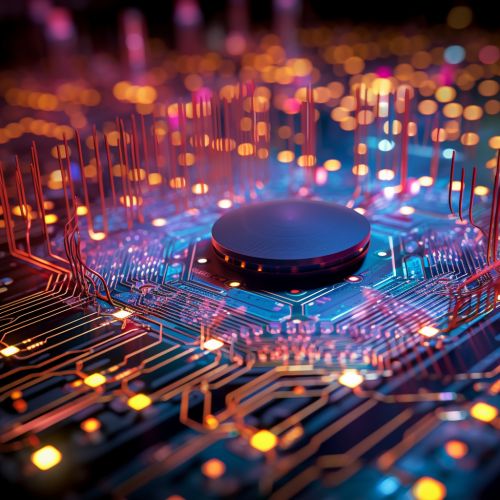Nanoscale Electronics
Introduction
Nanoscale electronics, also known as nanoelectronics, refers to the use of nanotechnology in electronic components. These devices are so small that inter-atomic interactions and quantum mechanical properties need to be studied extensively. Nanoelectronics are different from electrical and electronic devices that are on a larger scale because different laws of physics apply.


Nanoscale Devices
Nanoscale devices are typically less than 100 nanometers in size. They are so small that they can only be seen with a high-powered scanning electron microscope. The creation of these devices involves techniques and materials that are very different from traditional electronic device fabrication.
Quantum Mechanical Properties
At the nanoscale, quantum mechanical properties become very important. This is due to the small size of the devices and the low number of atoms involved. Quantum mechanics provides a framework for understanding how particles such as atoms, electrons, and photons can behave as both particles and waves. Quantum mechanical properties are fundamental to many nanoscale devices and applications.
Fabrication Techniques
Fabrication techniques for nanoscale devices are quite complex. They often involve the use of nanolithography, a method of etching, writing, or printing at the microscopic level, where the dimensions of characters can be on the order of nanometers. This is used in the fabrication of leading-edge semiconductor integrated circuits or nanoelectromechanical systems.
Applications of Nanoscale Electronics
Nanoscale electronics have a wide range of applications. They are used in everything from computers and mobile devices to medical technology and environmental monitoring.
Computing
Nanoscale electronics are at the heart of modern computing. They are used in the microprocessors and memory chips of computers and mobile devices. The use of nanoscale components allows these devices to be smaller, faster, and more energy-efficient.
Medical Technology
In the field of medical technology, nanoscale electronics are used in a variety of ways. They are used in diagnostic devices, drug delivery systems, and even in surgical tools. The small size of these devices allows them to be used in ways that were not possible with larger devices.
Environmental Monitoring
Nanoscale electronics are also used in environmental monitoring. They are used in devices that can detect and measure chemical and biological substances in the environment. These devices can be used to monitor air and water quality, detect hazardous substances, and even monitor the health of plants and animals.
Future of Nanoscale Electronics
The future of nanoscale electronics is very promising. As technology continues to advance, it is likely that the size of electronic devices will continue to decrease, while their performance will continue to increase. This will open up new possibilities for technology and society.


